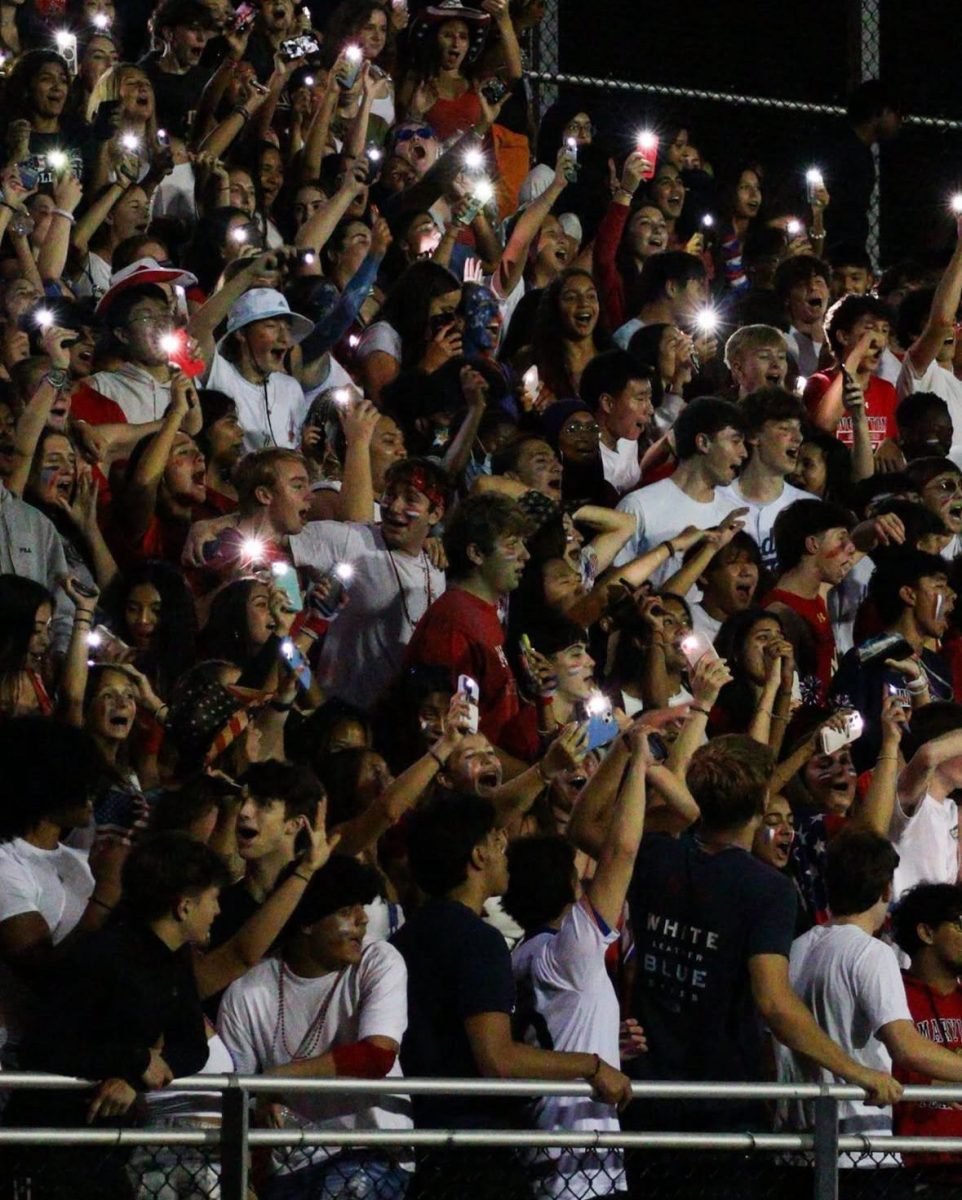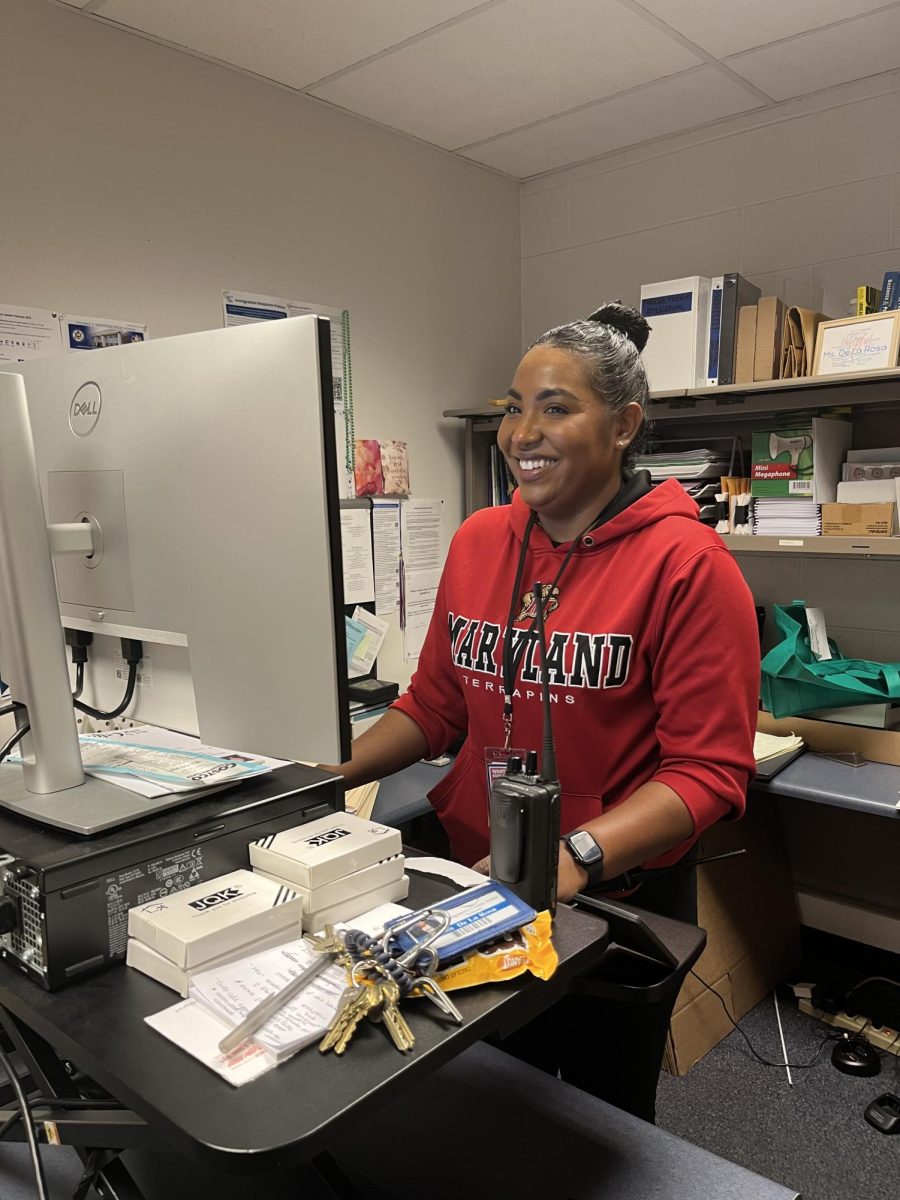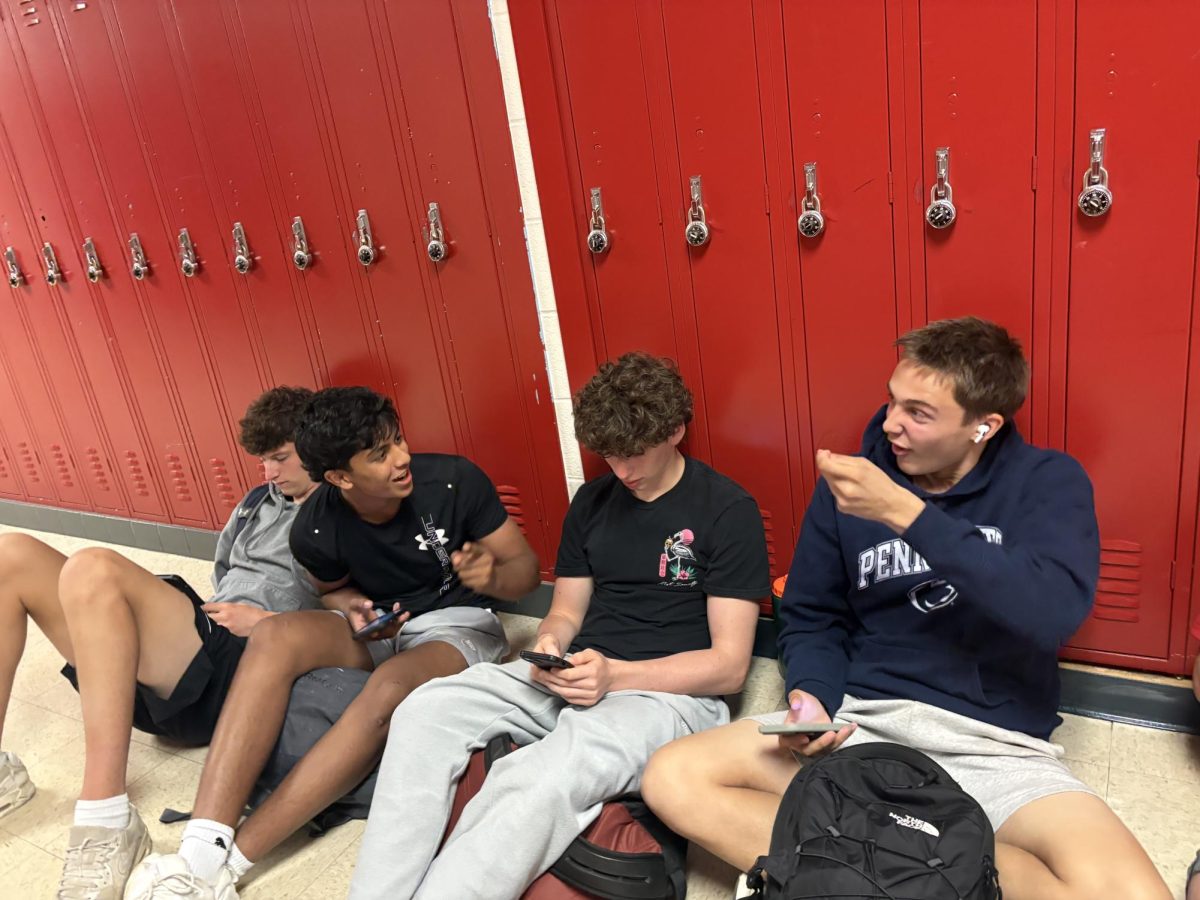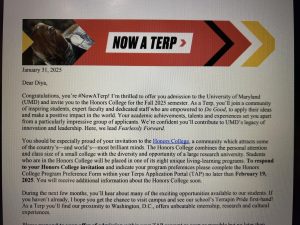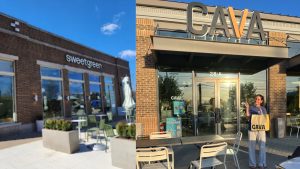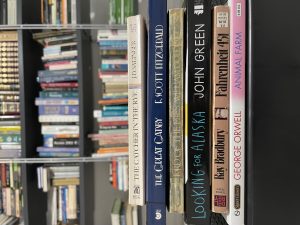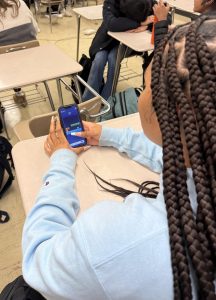Common Sense Reponds: It’s on all of us to learn about racism and leaders who have fought against it
June 8, 2020
As American citizens, members of the Wootton community and humans, it is our responsibility to remain informed about our own history. Some of us may just be beginning to learn about the effects of racism through the news, today, while others are taught from a young age. To be lucky enough to learn about racism, rather than experience it first-hand, is a privilege people who are not Black take for granted. If you want to learn about influential and inspirational African American leaders of today, and in the Wootton community, take it upon yourself to read the first few paragraphs of this article. However, if you don’t know or don’t think you know about important Black leaders in history, please read the entire article in order to be able to understand and sympathize with the Black community as best as possible.
Wootton voices for change
Today, there are people advocating for movements such as #blacklivesmatter, helping to inform others or simply sharing their story to try to show people what it is like to be Black in America. Within the Wootton community, arts teacher Stephanie Labbe, English teacher Lindsey Vance, junior Daniel Araya and more have been standing strongly in the fight for equality.
In addition to co-sponsoring the Black Student Union, Stephanie Labbe and her husband take an active role mentoring Black youth through her church. “It has been rewarding seeing our black students at Wootton find their voice and place at Wootton. And I’m not just referring to ‘inside’ the BSU. Watching BSU members engage in rigorous coursework, auditioning for shows, being leaders in clubs and programs, reading to elementary school children and watching our students take a seat at the table has been fulfilling and has shown students at Wootton that our black students have just as much a right to be there, as they do,” Labbe said.
Lindsey Vance has long been an active voice in our community. In high school at Quince Orchard, she wrote articles for the newspaper that featured her perspective on important issues students cared about such as the lack of diversity in school texts. Later, in college at Florida A&M University and Florida State University, she helped organize rallies to protest social injustices and volunteered for political campaigns. “I strongly believe in the importance of speaking truth to power in any situation you find yourself in, whether that be at school, work, with your friends and family or amongst strangers. At every point of my life, I have found opportunities to use my voice to advocate for those who have been marginalized and treated unfairly based on their race,” Vance said.
Vance brings the same attitude to school, where she co-sponsors the BSU. Because people of color are underrepresented in AP and honors classes, extracurricular clubs and special programs, the BSU provides a space for students to discuss important issues and propose solutions that address these inequities. “I think true leadership involves amplifying the voices of many different perspectives so that as a community we can share our stories and experiences with each other and in turn embrace how we experience life differently and the need to work together towards creating a more just and equal society,” Vance said.
President of the BSU, junior Daniel Araya, attended a recent protest and reflects on his experience. “It was surreal seeing the number of people, regardless of race, demanding change. The thing that shocked me most was the clear distaste the police showed for our cause. Instead of standing in solidarity, they smirked, laughed and took what we said as a joke. Nevertheless, the people stood strong, stood together and protested for what is right.”
Araya says he doesn’t see himself trying to lead the community, but simply someone doing what everyone should. He also advises the best way to get educated is to listen, keep an open mind when hearing the stories being told and demand change.
Celebrities speak out
Outside the Wootton community, celebrities with a large social media following such as Rihanna and Jamie Foxx have been spreading their opinions. On May 29, singer Rihanna tweeted a picture of George Floyd captioned, “If intentional murder is the fit consequence for ‘drugs’ or ‘resisting arrest’….then what’s the fit consequence for murder???!”
Jamie Foxx, the first ever Black lead in a Pixar film, has been using his platform to remind other celebrities to speak up about police brutality, and to take things a step further. While speaking to a crowd at San Francisco City Hall, Foxx called out Hollywood stars who aren’t getting involved in the movement: “And what I want to say about my Hollywood friends: You gotta get out here, you can’t just sit back. You can’t tweet. You can’t text. You gotta get out here.”
The history of the fight for Black equality
The long fight for equality for Black lives in America dates back prior to the beginning, and yet is still needed today. Throughout the racist legacy of slavery, Black leaders, artists and writers have shaped the character and identity of the nation. The following paragraphs will date back to the early 1830s.
In 2013, three Black organizers, Alicia Garza, Patrisse Cullors, and Opal Tometi, created a Black-centered political movement #BlackLivesMatter, in response to the acquittal of Trayvon Martin’s murderer, George Zimmerman. Their mission is to support the development of new Black leaders, as well as create a network where Black people feel empowered to determine their destinies in our communities.
On September 25, 2016, the Black Lives Matter movement gained attention when San Francisco 49ers players Eric Reid, Eli Harold and quarterback Colin Kaepernick kneeled during the national anthem before the game against the Seattle Seahawks to draw attention to recent acts of police brutality. Dozens of other players in the NFL and beyond followed after them.
In 2009, Barack Obama was inaugurated as the 44th president of the United States. Being the first African American to ever hold that position, he came on social media, on June 1, to urge protesters to remain peaceful in their efforts and to vote in all elections.
On August 28, 1963, around 250,000 people, both Black and white, participated in the March on Washington for Jobs and Freedom, the demonstration displayed the Civil Rights Movement’s growing strength. Civil Rights activist and Nobel Peace Prize winner Martin Luther King Jr. was the last speaker, where he gave one of the greatest speeches in American history. His “I have a dream” speech focused on how he envisions a world where there is harmony between the races.
A few years earlier, MLK Jr led supporters of his Southern Christian Leadership Conference (SCLC) in a nonviolent campaign of demonstrations against segregation, where he was arrested. From jail, he wrote “Letter from a Birmingham Jail,” which was published in the national press. His letter justified his decision to not call off the demonstrations even with the danger from enforcement officials. In 1968, he was fatally shot while supporting a strike.
In 1955, secretary of the Montgomery chapter of the National Association for the Advancement of Colored People (NAACP), Rosa Parks, was arrested for violating the city’s racial segregation ordinances, after not giving up her bus seat to a white man. Parks said, “I had been pushed as far as I could stand to be pushed. I had decided that I would have to know once and for all what rights I had as a human being and a citizen.”
In 1952, Malcolm X was released from prison after serving six years on a robbery charge. While in prison he joined the Nation of Islam (NOI), quickly becoming one of the most influential leaders in the community. Once paroled, he renounced NOI’s philosophy of separatism and advocated a more inclusive approach to the struggle for Black rights. On February 21, 1965, Malcolm was shot over 15 times at close range.
As soon as he signed his contract in 1947, baseball player Jackie Robinson became one of the most famous African Americans in the country. With that, he gave other African Americans a sense of pride, inspiration and hope. After Robinson’s historic breakthrough, baseball was steadily integrated, with professional basketball and tennis following in 1950.
During the 1920s, the Harlem Renaissance, the Great Migration of Blacks from the rural South to the urban North, marked the first time that mainstream publishers and critics turned their attention seriously to African American literature, music, art and politics.
Many famous influential African Americans emerged from this time period such as Louis Armstrong, trumpeter, composer, vocalist and actor, and one of the most influential figures in jazz, and Langston Hughes, poet, social activist, novelist, playwright and columnist.
During the mid to late 1800s, Blacks faced more segregation, violence and horror, from the Black Codes, which restricted freed Blacks’ activity to make them available as a workforce, to “Jim Crow” laws, which required separate schools, railroad cars, hotels, theaters, restaurants, barber shops and other establishments for Blacks and whites, to the rise of white racist societies, such as the Klu Klux Klan.
During this time, Blacks had few people who stood with them. Booker T. Washington, the author of Up From Slavery, as well as the newly founded NAACP became sources of inspiration. The NAACP stated goals such as the abolition of all forced segregation, the enforcement of the 14th and 15th Amendments, equal education for Blacks and whites and complete enfranchisement of all Black men.
In August 1831, Nat Turner led the only effective slave rebellion in U.S history, instilling fear in white Southerners. He later was sentenced to execution by hanging. That same year, William Lloyd Garrison, crusading journalist from Massachusetts, founded the newspaper The Liberator, and later became known as the most radical of America’s antislavery activists.
Common Sense urges all members of our community to use this brief list as inspiration to learn more and to end too many years of murder and inequality. We can be the generation to end it. This is something worth standing for, fighting for and dying for.
To learn more
News:
https://www.nytimes.com/
https://www.washingtonpost.com/regional/
Books:
Between the World and Me by Ta Nehesi Coates
Black Boy by Richard Wright
Incidents in the Life of a Slave Girl by Harriet Jacobs
Podcasts:
About Race
1619- New York Times
Pod save the people
Momentum: A Race Forward Podcast
Code Switch- NPR
Poems:
https://www.youtube.com/watch?v=c4TquYwHU1M
https://poets.org/anthology/black-lives-matter
Music:
‘Be Free’ by J. Cole
‘Black Rage’ by Lauryn Hill
‘Hands Up’ by Vance Staples
‘The Charade’ by D’Angelo and the Vanguard



